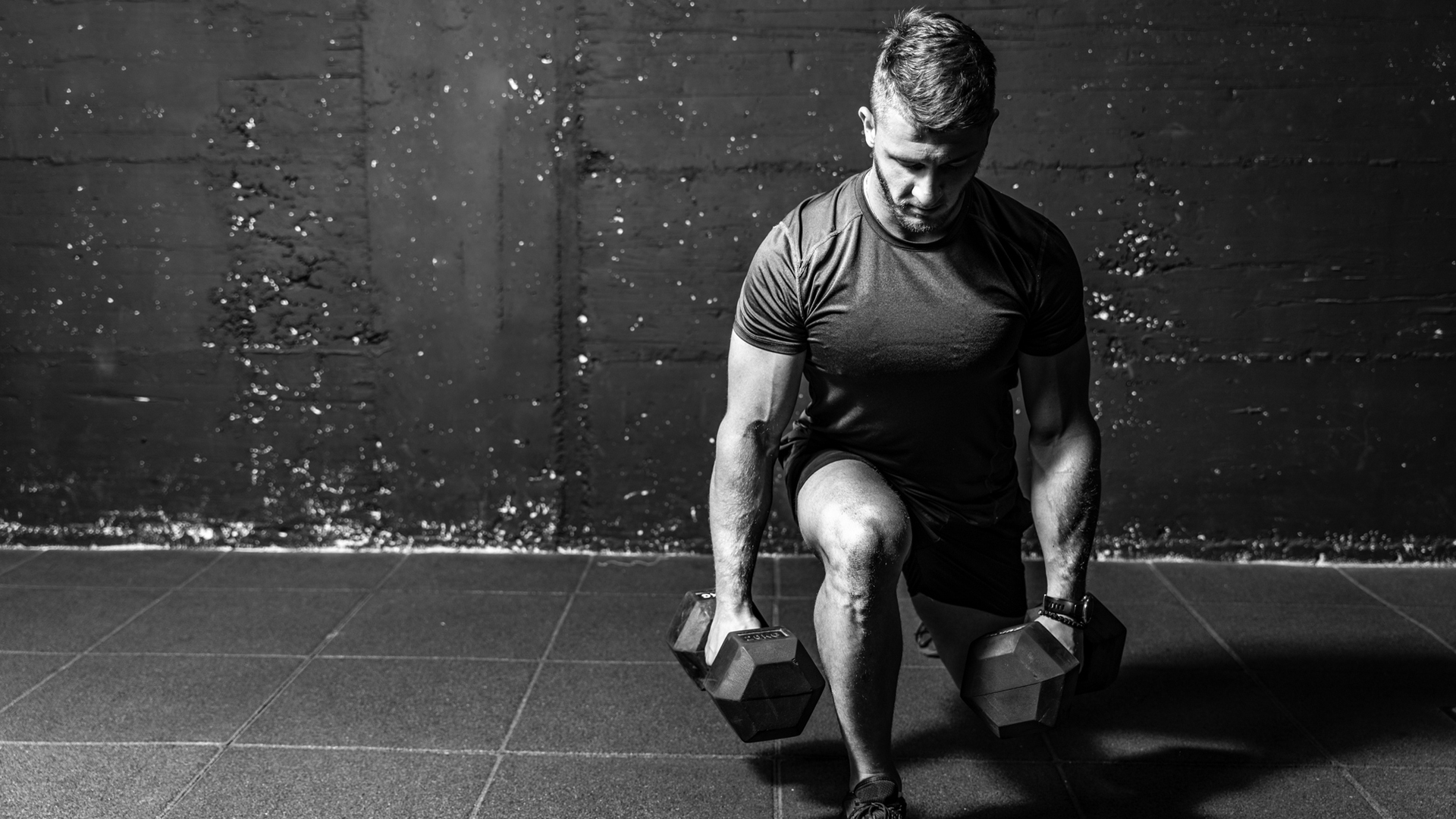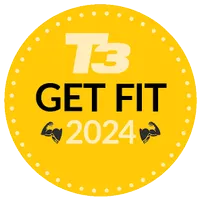

One of the biggest complaints among those striving for a particular physique - or level of athletic performance - is the issue of plateauing. In other words, you may experience hitting a metaphorical wall where you aren't getting any more muscular, faster, stronger, more explosive or whatever the goal may be.
The temptation may be to simply work more (or have a strop and pack it all in completely - don’t do this), but sometimes it’s more effective to employ a ‘mind over muscle’ outlook and work smarter in the gym. After all, not many of us can be full-time gym bunnies.
As we are talking about packing on muscle or generally attaining a more buff physique, we are focussing on training for hypertrophy (causing a muscle to get bigger) rather than training for strength or athleticism.
With this in mind, we’ve employed some of the learnings of Dr. Milo Wolf, a Sports Science Researcher at Solent University who studied “the effects of range of motion on muscle hypertrophy and strength” for his PhD and founder of Wolf Coaching.
Similarly, Adam Collard, personal trainer and Primal Strength ambassador has years of experience training competitive bodybuilders and athletes at the top of their game and, therefore, is perfectly placed to tell you how to get the most out of each workout.
So rather than spending more time in the gym, aim to make your workouts more efficient with the below guidance. Let the gains begin.
Get gym smart
Not getting the results you want, but spending ages in the gym? This could just be down to hitting a wall, not employing progressive overload (where you note the weight each weight and gradually increase) or poor sleep and diet.
Get all the latest news, reviews, deals and buying guides on gorgeous tech, home and active products from the T3 experts
We won’t get into the latter, as that’s another story entirely (see below), but there are ways you can make your weekly gym and workout sessions more efficient.
“Train to failure,” says Dr. Milo Wolf. “By taking each set to failure, you are making each set more stimulative,” he adds. Science has proven that taking your set to complete failure, where you physically can’t do any more, can result in two-times more growth than those sets where you have reels left in the tank.
Compound exercises are also a great way of targeting a variety of muscle groups all at once. Things like the squat, the deadlift, the bench press and the pull-up all fall into this camp and can help stimulate overall growth better than specialist isolation exercises that generally take a lot longer.

Plan to succeed
It might sound trivial, but there are so many ways folks waste time in the gym, and this could be part of the plateau problem. You’re simply not extracting the most out of each workout.
“Prioritising dumbbell and stack-loaded machine and cable machine exercises are all great options when compared to a barbell movement, for example,” Dr. Wolf explains. “You’ll have to spend time setting up the plates, adding a collar and more. The good news is, your muscle doesn’t care what piece of equipment you use to stimulate it,” he adds.
On the same subject of saving time, Dr Wolf says that prioritising bi-lateral movements, or those where you use both arms and/or legs, is a more efficient use of time than focussing on uni-lateral work. So long as you are pushing yourself to failure and gradually increasing load over time, results will show.
In addition to this, not too much focus should be placed on a warm-up. Hitting the treadmill or rowing machine for 30 minutes takes time and eats into your energy reserves. Instead, make the first couple of sets of your exercise the warm-up by picking a lighter weight and pushing out 8-12 reps. Slowly build from here until you get to your working weight.
If you’ve already sufficiently warmed up your upper body, for example, with your routine, there shouldn’t be any need to do this all over again.

Sweat the technique
There are a number of techniques and tweaks to your workout you can employ to make it more efficient and, therefore, lead to greater muscle growth through hypertrophy. The first, and one of the most often cited, is supersets.
This involves pairing two antagonistic exercises, or those that incorporate opposite muscle groups, and performing them back-to-back. “Biceps and triceps is one of the most common,” explains Dr Wolf. “But chest and back, quadriceps and hamstrings or any two exercises that don’t have any overlap all work,” he adds.
The focus here is ensuring they don’t overlap, so don’t throw two bicep exercises back-to-back, and also make sure the two exercises you pick aren’t systemically fatiguing. In other words, ensure they aren’t big movements that generally have you sucking for air.
“I wouldn’t recommend a super set with a squat and a lateral raise,” Dr. Wolf says. “They have no overlap in terms of the muscles they are recruiting, but there will be a substantial amount of systemic fatigue from the squat,” he adds.
Drop sets are also a brilliant way of saving time in the gym and working yourself hard. So, performing a hard set to your maximum capability (or close) and then immediately reducing the weight by 20 per cent and going again. Repeat for several sets before resting.
Again, this is where Dr. Wolf’s advice on using dumbbells and stack-loaded machines comes into play, as it’s super quick and easy to adjust the weight.
Multi-task for maximum efficiency
Adam Collard takes a slightly different approach to maximising results with every workout. Naturally, he agrees that good exercise form is hugely important, but also sees big benefits in pinching elements from various disciplines and incorporating them into one beastly session.
“My advice would be to take the best elements of strength training, CrossFit, functional fitness, and bodybuilding and combine these together for the optimal workout,” he says.
“Every minute on the minute (EMOM) and as many reps as possible (AMRAP) style workouts are great for this.
“These styles of workouts allow you to combine a variety of movements and exercises in one workout to be more efficient,” he adds.
The thinking here is not to hone in on a single muscle (bodybuilder style), work it to exhaustion and glow in the subsequent growth results, but instead take a more holistic approach that burns calories and builds muscle. After all, who doesn’t want to shred fat, build strength and simultaneously construct a bulletproof cardiovascular system in a short space of time?
Adam provides an example of a super-efficient chest and back workout, which follows the aforementioned EMOM style, where you hit an exercise every minute on the minute until complete. It requires a solid level of stamina, so arguably not for the complete novice, but there will be no denying the results. And it’s all over in 30 minutes.
- Minute 1 – 8 heavy barbell bench press
- Minute 2 – 16 kettlebell gorilla rows (8 left, 8 right)
- Minute 3 – 15 calories on the air bike or Ski ERG or rower
- Repeat the above until you hit the 30-minute timer
“This is a great way to incorporate lots of push and pull upper body movements while also burning and expending a lot of calories in a short period of time,” Adam says.
“Combine the workout with a five-minute warm up at the start and add some accessory work or abdominal exercises at the end for great all-round results,” he adds.

A word on rest and nutrition
Even if you follow all of the previous advice to a tee, the results you see will be minimal if you’re not willing to put some effort into diet, nutrition, hydration and recovery.
Let’s start with the basics: if you’re looking to lose weight and ‘shred’, you need to be in a calorie deficit while following a structured workout routine. That means burning more calories than you put in every day. Work out how many calories you need to ingest per day by using this calorie calculator.
From here, reduce your intake by 250-500 calories per day. Start with 250 and reduce after a few weeks if you’re not seeing any results.
Conversely, you need to be in a calorie surplus (ingesting more calories than you burn) if you want to build serious muscle. Follow the same steps as above but add 250-500 calories per day. There’s no need to go mad here and eat everything in sight, you’ll just gain weight and be very disappointed.
No matter the goal, you need to ensure you are getting enough protein to build muscle, and the general consensus is 1.2-1.7 grams of protein per kilogram of body weight per day. This should predominantly be from natural sources, with supplements like protein shakes, snacks and bars used sparingly.
Although protein is a focus for muscle building and retention, don’t forget about the remainder of a healthy diet. Plenty of fibre through fresh veg, carbohydrates for energy and a limited amount of natural fats.
While this guide isn’t supposed to be about diet, which is hugely important, you should make sure yours is healthy and well-rounded; otherwise, everything you’ve read so far is kinda pointless.
“Firstly, make small and progressive changes. The most frequent problems and the reason people fail to reach their goals are starting from nothing and trying to train six days per week on an athlete programme while starving themselves. This leads to falling off the wagon and having a negative relationship with the gym, fitness and training,” Adam Collard says.
“For example, start with three to four days in the gym per week, drink more water, sleep a solid eight hours per night, nutritionally aim for a protein target and be more aware of calorie consumption.
“Secondly, have a plan and create a structure for your fitness routine and goals. Eliminate the guesswork to help you stick to the new routine amidst a busy lifestyle,” he adds.
This feature is part of T3's Get Fit 2024 campaign. We’ll be bringing you a wealth of guides, features, deals and news to help you get healthy, fit and ready for anything the new year can throw at you. Whether you’re a newcomer to fitness or someone with a passion for it, we’ll bring you all the best workouts, diet advice and gear to set you on the right track.
Leon has been writing about automotive and consumer tech for longer than he cares to divulge. When he’s not testing the latest fitness wearable and action camera, he’s out in a shed fawning over his motorcycles or trying not to kill himself on a mountain bike/surfboard/other extreme thing. He's also a man who knows his tools, and he's provided much of T3's drills coverage over the years, all without injuring himself.

